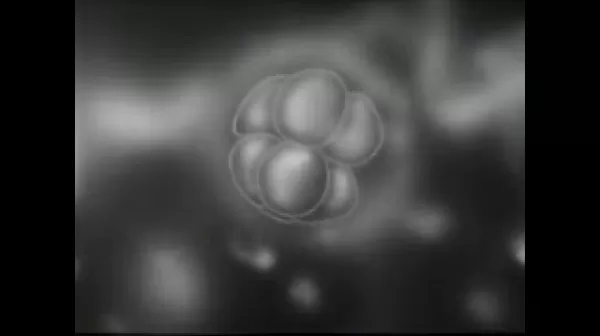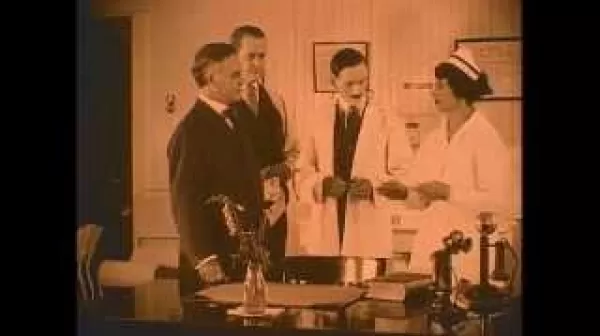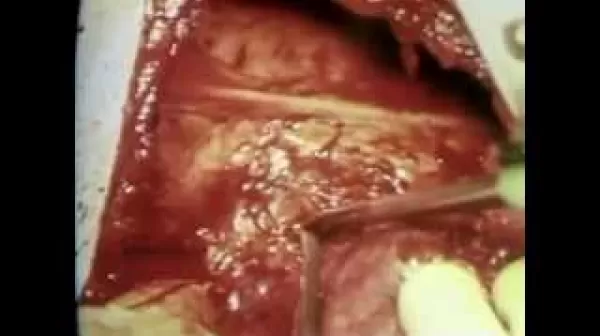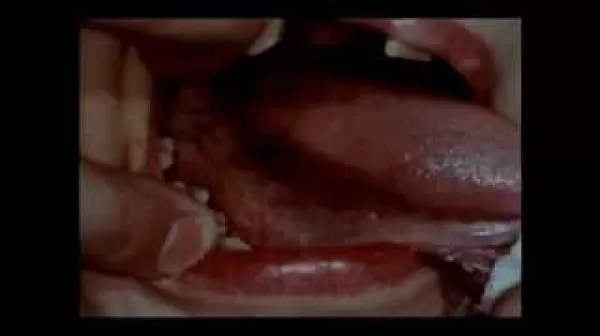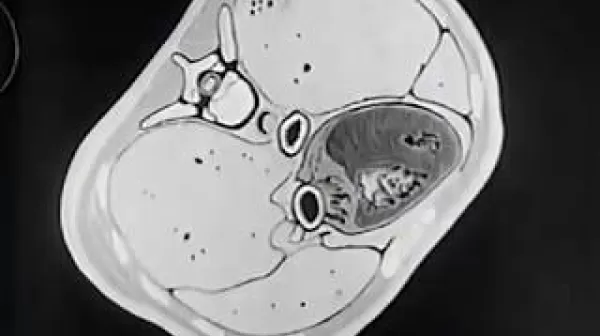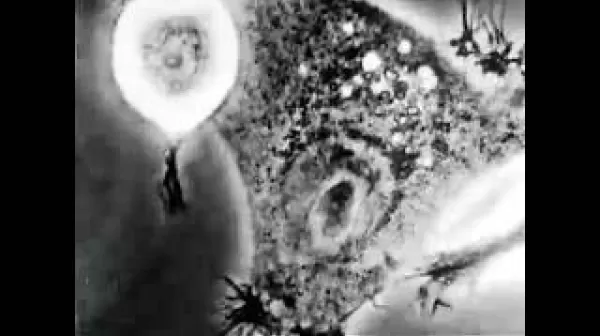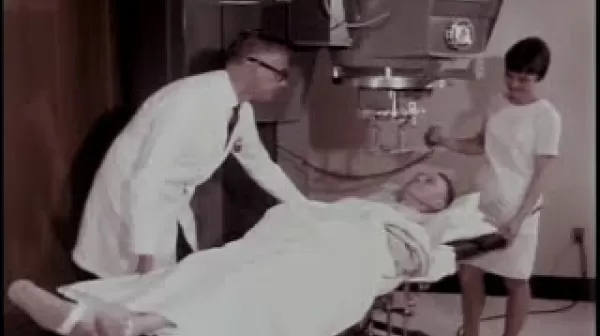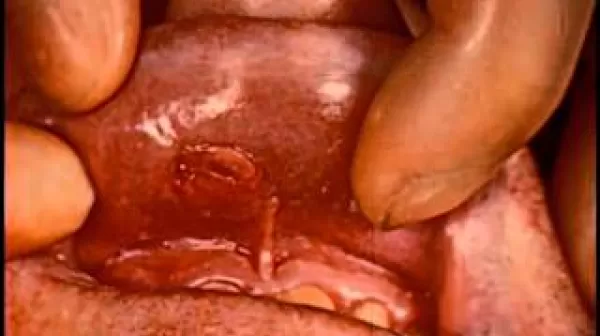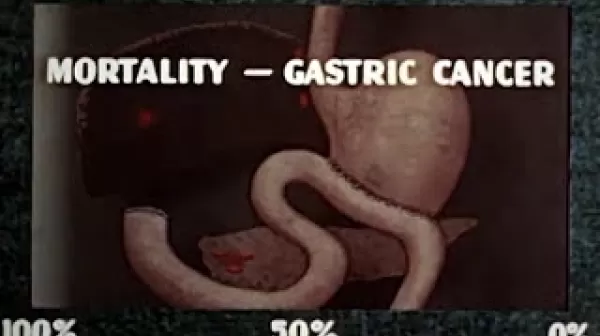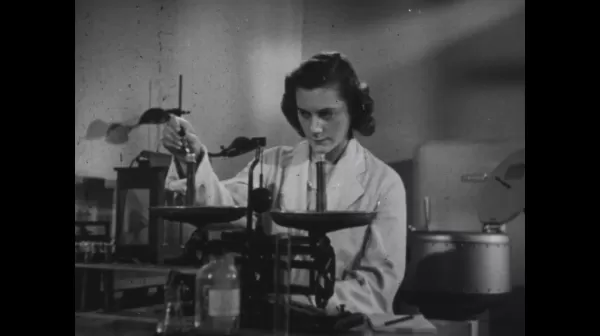Le Cancer (l'Office national du film du Canada, 1950)
This film is excerpted from the full-length Challenge: Science Against Cancer. Portions are presented in French and portions in English. A patient, Mr. Davis, enters the medical office. He is shown to have a treatable cancerous lesion on his face. Several doctors discuss the case and the recommended treatment. The film shows cells and cell division, laboratories, the use of microscopes, and experiments with mice. The treatment for Mr. Davis begins immediately and uses radium.

